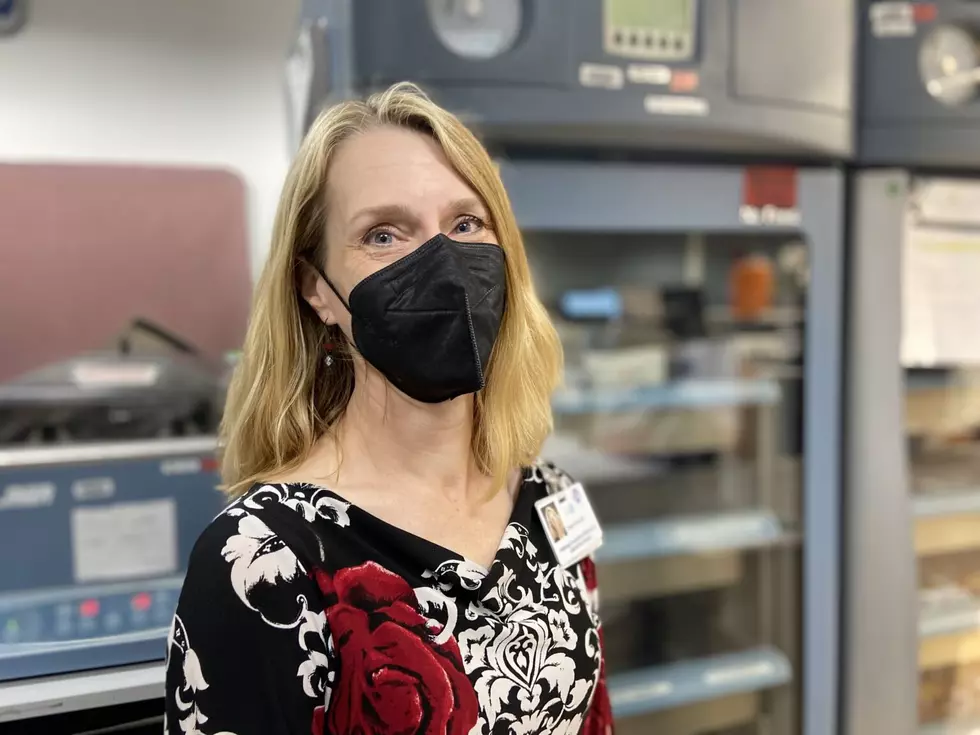
Montana only collecting 75% of blood needed; Community Medical half stocked
Montana is only collecting 75% of blood necessary to meet hospital demand as blood supply shortages beleaguer the state and country.
“It’s the worst shortage we have seen in about 10 years,” said Matt Ochsner, communications director for the American Red Cross of Montana and Idaho. “And demand is staying fairly steady … every 2 seconds in the United States, someone needs a life-saving blood transfusion, and a single blood donation takes less than one hour and can save up to three lives.”
Community Medical Center in Missoula had only around half of the amount of blood it usually stocks on Tuesday, said Dr. Nicole Finke, a pathologist at the hospital.
“Empty shelves are annoying when you go to the grocery store, but it’s terrifying when you go to the blood storage,” she said.
The combination of lack of donors and ability to staff blood banks has been amplified by the current COVID-19 surge fueled by the highly transmissible omicron variant, Ochsner said: “We’ve faced some shortages and challenges throughout COVID-19, but this is the direst situation we have seen.”
While the American Red Cross, which supplies 40% of the nation’s blood supply, typically sees a drop in blood donations around this time of year due to winter weather making it harder to hold blood drives and cold and flu seasons, this shortage is exacerbated by COVID-19, Ochsner said. To increase donations, he said anyone who donates blood through the Red Cross in January is automatically entered into a raffle to win two tickets to this year’s NFL Super Bowl.
And more staff is needed, Ochsner said.
“As so many businesses and organizations are seeing right now, we are also facing staffing shortages from COVID-19, which is affecting our ability to hold blood drives and collect life-saving blood,” Ochsner said. “We are actively recruiting phlebotomists and using incentives like increased pay and sign-on bonuses to encourage people to come join our team, and we will pay for all the training it would require.”
Finke said Community used to get blood from the Red Cross every day, but because of the shortage, it only receives shipments twice a week. And the lack of blood means hospitals have to reevaluate triage plans and make difficult decisions when using blood.
“We try to keep a five-day supply of the different blood types, and right now, some of the key blood types are down to a one-day supply,” Ochsner said. “There are definitely hospitals around the country that have had to postpone surgeries due to lack of blood supply … it hasn’t happened in Montana to my knowledge, but the conversations have started that those situations may arise in the coming weeks.”
The shortage is even more acute among platelets, which are needed to stop bleeding and have a shorter shelf life than red blood cells.
“On Jan. 7, there was one unit of platelets available in all of Missoula, which would not have been enough if there was a serious car accident,” Finke said.
Rich Rasmussen, CEO of the Montana Hospital Association, said this is another example of how COVID-19 has ravaged the healthcare industry.
“Normally, during blood shortages, the call would go out for blood donations, and people would respond, but this is different because those who collect and process the blood are isolating,” he said.
Anecdotally, Rasmussen said he has heard the shortage might take months to level off: “If that is the case, it has the potential to disrupt services in our state and across the country.”
But unlike other problems caused by COVID-19, Finke said there is a solution to this shortage.
“Unlike shortages at the grocery store, this supply shortage, as a community, we can significantly change by donating blood,” Finke said.
